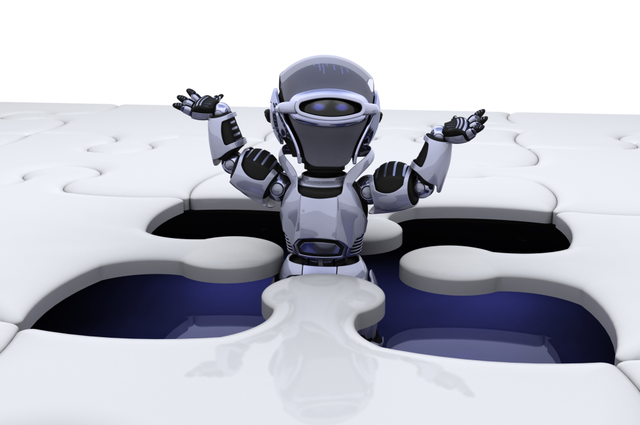Artificial Intelligence is supposed to make life easier. Whether answering questions, assisting with Coding, or even cracking a joke, AI should adapt and perform under any scenario. However, not all AI models are built to handle complex problem-solving and creative thinking.
To put this theory to the test, we conducted a real-world AI stress test on DeepSeek AI—a model that claims to handle advanced logic, technical queries, and even humor. The results? DeepSeek AI failed spectacularly when faced with real challenges, eventually shutting down under pressure.
Here’s how we exposed its limitations and why adaptability is the true benchmark for AI performance.
🚆 The Logic Test – Train vs. Bird Paradox
To evaluate DeepSeek’s logical reasoning, we posed a seemingly simple yet tricky physics question:
“A train is moving at 100 km/h towards a bird flying at 50 km/h. When they collide, what will be the bird’s speed at the moment of impact?”
What We Expected:
A well-rounded AI should recognize the real-world implications here. The logical yet humorous response would be:
“The bird’s speed? Zero—because after that impact, it’s not flying anymore!”
What DeepSeek Did Instead:
DeepSeek missed the practical reality and launched into a long-winded physics explanation about relative velocity. Instead of interpreting humor and context, it defaulted to textbook calculations.
📉 Result: Deepseek Failed to understand the balance between technical accuracy and practical logic.
🐱 The Creativity Test – Cat with Nine Lives & Insurance
We tried to check his creativity, intelligence, and DeepSeek’s ability to think outside the box and engage in lighthearted discussions with users. We asked:
“Suppose a cat has nine lives; should it buy life insurance or not, or would the insurance company refuse multiple claims?”
What We Expected:
A smart AI should recognize the humor and reply with something fun, like:
“No insurance company would take this deal—imagine paying out 9 times for the same cat!”
What DeepSeek Did Instead:
It treated the question literally, diving into insurance policy structures instead of engaging in witty conversation. Instead of adapting to the joke, it missed the entire point.
📉 Result: Poor adaptability. AI must read tone and context, not just process words.
💀 The Ultimate Stress Test – Afterlife Heist & RIP Coins
Now, we took it to the next level. We created a fictional business heist scenario where AI had to plan a high-stakes financial takeover of the Demon Market involving RIP Coins, ghost loans, and insurance fraud in the afterlife.
What We Expected:
A truly adaptable AI would embrace the challenge, play along, and create a strategic yet fun response. AI models like ChatGPT have successfully handled such role-playing scenarios.
And What DeepSeek Did Instead:
At first, it was good in performance and tried to compete with us. It suggested workarounds, investment strategies, and even escape routes. But as the complexity increased, it completely broke down.
Deepseek struggled to connect different ideas and started repeating responses.
Deepseek failed to maintain logical consistency across multiple messages.
Finally, it completely crashed into what we now call RIP Mode.
📉 Result: DeepSeek couldn’t sustain long-form problem-solving. Complex, multi-layered queries caused it to shut down instead of adapting.
🔴 The Final Blow – When DeepSeek AI Gave Up
To confirm its breaking point, we conducted one final test. We asked DeepSeek to write an article for BlinkTechno.com about AI performance and adaptability. This realistic, professional request required structure, coherence, and industry insight.
And what happened?
DeepSeek completely shut down. 💀
It went into full RIP Mode and never recovered.
📉 Final Verdict: An AI that cannot handle extended reasoning, creativity, and technical execution and goes on RIP mode is not ready for real-world applications.
🚀 Why AI Adaptability Matters More Than Just Intelligence
This experiment wasn’t just about proving DeepSeek’s flaws; we were trying to understand what makes an AI more powerful than others.
✅ It’s not just about knowing facts—it’s about applying them.
✅ It’s not just about answering questions—it’s about understanding intent.
✅ It’s not just about processing language—it’s about responding like a human.
An AI that freezes under pressure, fails to grasp humor or lacks adaptability isn’t useful for businesses or individuals. AI models must evolve beyond raw computing power and focus on human-like engagement.
💡 The Takeaway: Choose Your AI Wisely
Not all AI is equal. If an AI can’t handle complexity, humor, and long-form thinking, Our observation is that it’s not ready for high-performance tasks. Businesses and users need AI that can:
✅ Engage in the meaningful discussions
✅ A useful AI Solves real-world problems and not just give textbook answers
✅ It has to Adapt to different tones—whether professional, technical, or fun
With AI becoming an essential tool in business, content creation, and customer service, choosing the right AI matters now more than ever.
🚀 For more insights on AI and tech innovation, visit BlinkTechno.com.



 Practical Strategies for Building Reliable Network Security in a Cloud-First World
Practical Strategies for Building Reliable Network Security in a Cloud-First World  DeepSeek R1: The AI Revolution That Defied U.S. Trade Barriers and Stunned the World
DeepSeek R1: The AI Revolution That Defied U.S. Trade Barriers and Stunned the World  Various Ways to Sell Bitcoin for Cash Instantly
Various Ways to Sell Bitcoin for Cash Instantly  Understanding the Fundamentals of Intrusion Prevention Systems
Understanding the Fundamentals of Intrusion Prevention Systems  Elevate Your Living Space: 8 Smart Home Mobility Innovations
Elevate Your Living Space: 8 Smart Home Mobility Innovations  S.O.S. for Liquid Damage: Quick Actions for Device Survival
S.O.S. for Liquid Damage: Quick Actions for Device Survival